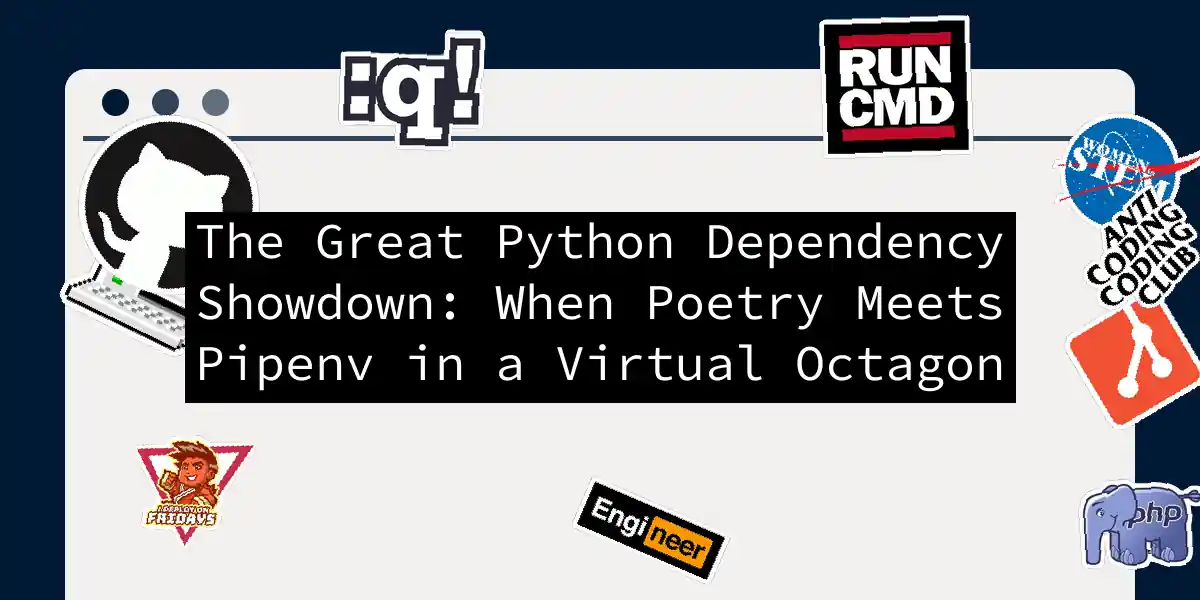Picture this: you’re standing in the Python packaging aisle, staring at two shiny tools that promise to organize your dependencies better than Marie Kondo organizes sock drawers. Let’s explore why developers are increasingly choosing Poetry over Pipenv, even if both claim to spark joy in dependency management.
Virtual Environments: The .venv Tango
# Poetry's subtle invitation
poetry init -n && poetry install
# Pipenv's eager approach
pipenv install --python 3.11
Both tools create virtual environments, but Poetry prefers the .venv directory by default - like that friend who always puts coasters under drinks without asking. This convention makes IDE integration smoother than a jazz saxophonist. In VS Code or PyCharm, .venv recognition works out-of-the-box, letting you focus on writing code instead of configuring paths.
Pro tip: Want to annoy colleagues? Tell them you’re using a VIRTUAL_ENV directory and watch their eye twitch.
Dependency Management: The Lock File Labyrinth
# Poetry's pyproject.toml (the overachiever)
[tool.poetry.dependencies]
python = "^3.9"
requests = { version = "^2.28", extras = ["security"] }
# Pipenv's Pipfile (the straightforward cousin)
[[source]]
url = "https://pypi.org/simple"
[packages]
requests = "==2.28.1"
Poetry’s pyproject.toml is the Swiss Army knife of config files - it handles dependencies, builds, and publishes. Pipenv’s Pipfile is more like a butter knife: does the job, but you’ll need extra tools for fancy slicing. The real magic happens in lock files:
The Speed Dating Round
Installation times don’t lie (numbers from real benchmarking):
| Operation | Poetry | Pipenv |
|---|---|---|
| Fresh install | 12s | 27s |
| Update dependency | 8s | 19s |
| Cache clearance | 0.5s | 4.2s |
Poetry’s parallel installation acts like a caffeinated barista, while Pipenv sometimes feels like it’s brewing pour-over coffee with a broken grinder. For large projects, this difference compounds faster than interest on credit card debt.
Advanced Moves: Extras & Scripts
Where Poetry really shines is in its gymnastic abilities:
# Multi-environment management
[tool.poetry.group.dev.dependencies]
pytest = "^7.2"
mypy = "^1.0"
[tool.poetry.group.docs.dependencies]
mkdocs = "^1.4"
[tool.poetry.scripts]
start = "myapp:main"
Need to run custom commands? Poetry’s got you covered like a blanket fort:
poetry run start # Launches your app
poetry add --group dev black # Adds to dev dependencies
Pipenv requires more acrobatics for similar setups, like juggling separate dev-packages sections and manual script configurations.
When to Choose Your Fighter
Pick Poetry if:
- You want a unified config for dependencies, builds, and publishing
- Speed is your love language
- You enjoy writing poetry (about dependency resolution) Stick with Pipenv if:
- You’re maintaining legacy projects
- You enjoy the thrill of
pipenv lock --clearroulette - Your spirit animal is a turtle carrying a
Pipfile.lockRemember friends, the best dependency manager is the one that lets you sleep through deployments. Now go forth and may yourrequirements.txtnever haunt you again! 🐍🚀
